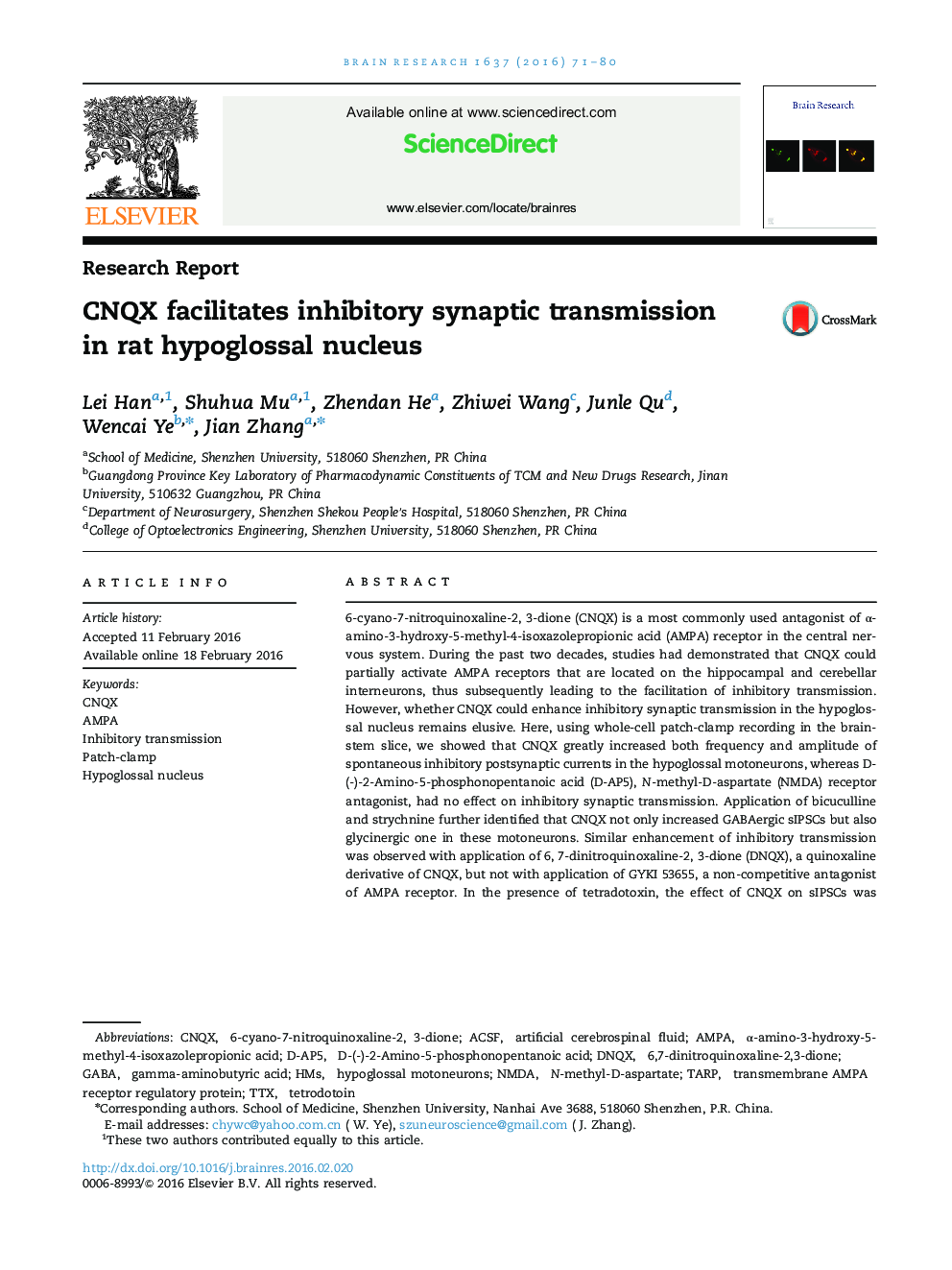| Article ID | Journal | Published Year | Pages | File Type |
|---|---|---|---|---|
| 4323620 | Brain Research | 2016 | 10 Pages |
•CNQX greatly enhanced GABAergic transmission within hypoglossal nucleus.•CNQX was first found to trigger facilitation of glycinergic transmission in the brain.•The CNQX-induced facilitation of inhibitory transmission depended on action potential.
6-cyano-7-nitroquinoxaline-2, 3-dione (CNQX) is a most commonly used antagonist of α-amino-3-hydroxy-5-methyl-4-isoxazolepropionic acid (AMPA) receptor in the central nervous system. During the past two decades, studies had demonstrated that CNQX could partially activate AMPA receptors that are located on the hippocampal and cerebellar interneurons, thus subsequently leading to the facilitation of inhibitory transmission. However, whether CNQX could enhance inhibitory synaptic transmission in the hypoglossal nucleus remains elusive. Here, using whole-cell patch-clamp recording in the brainstem slice, we showed that CNQX greatly increased both frequency and amplitude of spontaneous inhibitory postsynaptic currents in the hypoglossal motoneurons, whereas D-(-)-2-Amino-5-phosphonopentanoic acid (D-AP5), N-methyl-D-aspartate (NMDA) receptor antagonist, had no effect on inhibitory synaptic transmission. Application of bicuculline and strychnine further identified that CNQX not only increased GABAergic sIPSCs but also glycinergic one in these motoneurons. Similar enhancement of inhibitory transmission was observed with application of 6, 7-dinitroquinoxaline-2, 3-dione (DNQX), a quinoxaline derivative of CNQX, but not with application of GYKI 53655, a non-competitive antagonist of AMPA receptor. In the presence of tetradotoxin, the effect of CNQX on sIPSCs was abolished, suggesting that an increase in presynaptic interneuron spike firing rate induced by CNQX was responsible for the facilitation of sIPSCs. Taken together, these results demonstrated that the excitatory effect of CNQX on presynaptic interneurons triggered enhancement of both GABAergic and glycinergic synaptic transmission within the rat hypoglossal nucleus.
